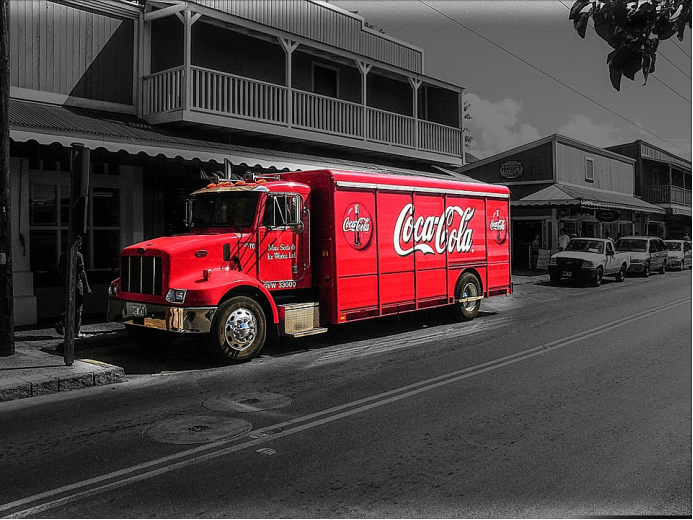In the tide of globalization, Chinese brands face the decision between “expanding” and “exporting” internationally. While some companies remain at the export stage, relying on cost advantages and OEM production, changing market conditions have led to shrinking profit margins for this model. Meanwhile, others attempt to expand globally but struggle to make waves in overseas markets due to a lack of localized branding material strategies.
Gone are the days when a one-size-fits-all approach could yield success—such as clothing brands promoting snowy Christmas posters in tropical countries or automotive manufacturers launching large SUV campaigns in the narrow streets of the Netherlands. These are clearly not smart moves!
When Chinese brands sail across to European and American shores, they must pinpoint which brand elements can remain unchanged and which require localization. This is not just about maintaining a consistent global brand image; it’s also about forging an emotional connection with local consumers.
Six Dimensions to Evaluate Which Brand Materials Require Localization
1. Core Values and Brand DNA
Maintain global consistency in your brand’s core values and DNA to foster brand recognition and loyalty. Just as Coca-Cola’s iconic logo and the “Coke” brand are widely recognized in the global carbonated beverage market, “Coke” even became synonymous with the term carbonated beverages. 
Chinese brands expanding overseas should also preserve their core identity. For instance, Huawei upholds its core values of innovation and quality across global markets, while BYD consistently communicates its brand message “Build Your Dreams,” ensuring strong brand recognition and loyalty worldwide.
2. Differentiating Elements
While maintaining unique selling propositions, certain elements can be localized.
Xiaomi emphasizes affordability and innovative design overseas, consistently reinforcing its brand personality.
Language, color schemes, imagery, packaging, and culturally-oriented promotional videos should be tailored to local cultures to resonate with local audiences.
Coca-Cola exemplifies this approach with its localized websites, customizing content and design according to local culture—highlighting rainbow elements on its German site to support LGBTQ+ initiatives, integrating pizza imagery on its Italian site, and using fireworks as visual symbols on its Japanese site.
3. Consumer Sensitivity
Consider the sensitivity and receptiveness of the local market.
In culturally sensitive regional markets, while maintaining core brand values globally consistent, all other aspects—from brand visual identity to the transcreation of slogans, and the creative concepts and visual presentations in advertising materials—should be thoughtfully adjusted to align with the local consumers’ values and cultural contexts.
Nike designed sport hijabs for Muslim women, respecting cultural differences and enhancing its brand image. Conversely, KFC faced backlash in China for an ad suggesting fast food was more important than family time, underscoring the importance of understanding local values and perceptions during the localization.

4. Resources and Costs
As noted earlier, in culturally sensitive markets, brand elements must be localized to fit local values and cultural contexts. This might involve adjustments ranging from minor content deletions or additions to a complete rebranding of materials, necessitating additional budget allocation.
Therefore, when planning to enter a new market, it’s crucial to evaluate the number of target regions, language varieties, and the scope and extent of brand element modifications needed. This ensures that your localization strategy aligns with budget and strategic goals.
5. Risk Assessment
Risk assessment is also a crucial part of the process. Brands must be vigilant about the risks of cultural misinterpretation or brand image confusion during localization.
For example, Balenciaga’s 2020 Qixi Festival “tacky” ad campaign aimed to appeal to young Chinese consumers by blending tacky aesthetics with millennial style. However, the final execution ended up highlighting the brand’s perceived “arrogance” and “ignorant of Qixi culture”, resulting in negative public sentiment.
Challenges Faced
Brands requiring global planning and localized content production face challenges such as the absence of unified content strategies, diverse media formats, sufficient understanding of cultural and linguistic nuances, creation and maintenance of content libraries, high-quality content, and necessary expertise.
How to Address These Challenges?
Landelion offers global content strategy consulting and diagnostics, helping businesses identify gaps in their global content needs and providing optimization measures. By helping businesses establish and manage content libraries based on market segmentation, developing content strategies informed by global and local market research, and facilitating content production and localization—including document translation, website localization, multimedia localization, and the creation of localized brand materials—we provide a comprehensive solution for brand’s globalization and localization.
When Chinese brands enter European and American markets, their brand materials need to be adaptable. It’s essential for companies to preserve their core values and brand DNA while making localized adjustments to certain elements, ensuring a better fit with the target market. This process requires not only a deep understanding of local culture but also careful consideration of costs, resource allocation, and potential risks. Through such strategic planning, Chinese brands can achieve success in international markets!
As an experienced cross-border communication service provider, Landelion offers a range of services from overseas brand marketing to localized content creation. If you have any business needs, please feel free to contact us at +86 400 097 8816 or email marketing@landelion.com.




